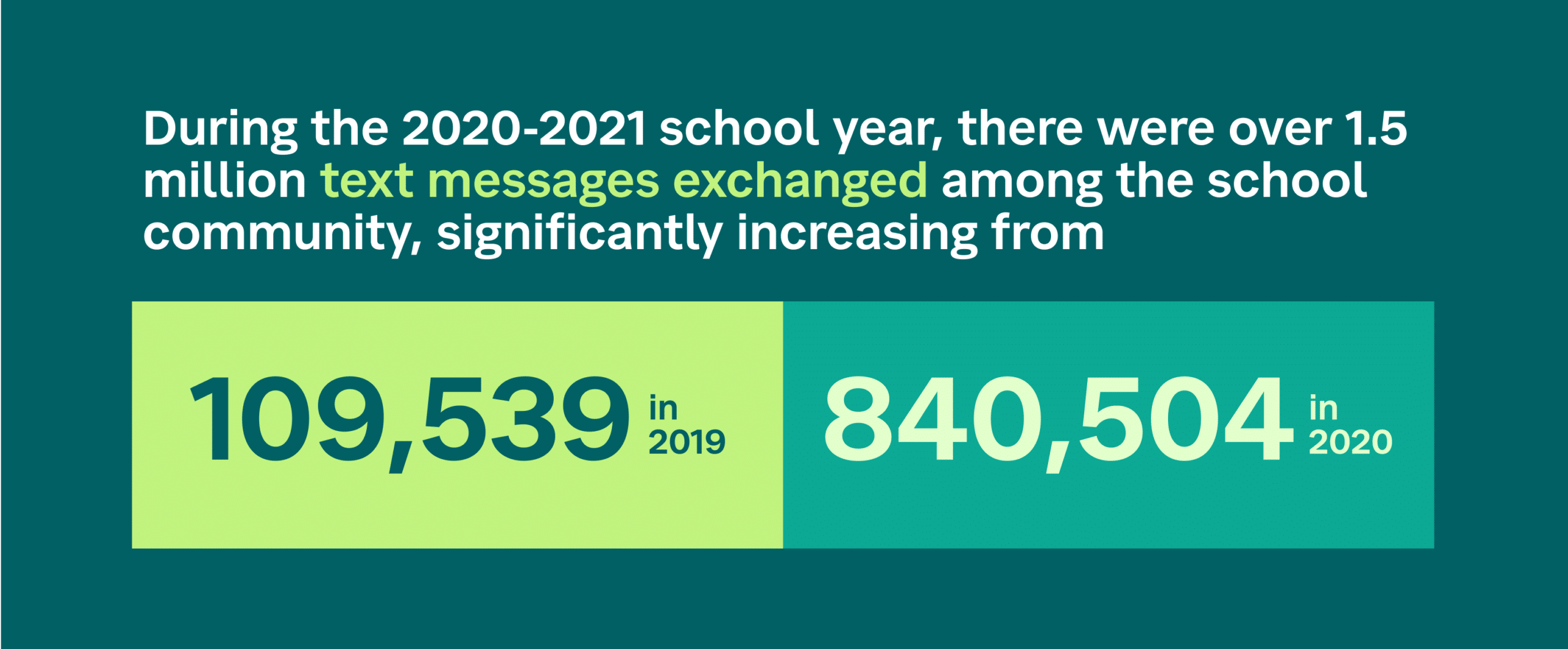![Featured Image [On-Demand Webinar] 5 Proven Strategies to Boost Student Attendance](https://www.schoolstatus.com/wp-content/uploads/Featured-Image-On-Demand-Webinar-5-Proven-Strategies-to-Boost-Student-Attendance-1-400x267.png)
How San Marcos CISD Built a Stronger Community Through Equitable Communications

The mission of San Marcos Consolidated Independent School District was clear: build the district’s positive perception and school community. District leadership recognized that the key to achieving this goal was to strengthen foundational relationships among educators, administrators, and families. To do so, San Marcos CISD partnered with SchoolStatus to implement equitable and transFamily communication solutions to connect with and empower students’ families.
Building Relationships for Student Achievement
When Andrew Fernandez joined San Marcos CISD in 2017 as Executive Director of Communications and Community Relations, the district faced challenges that significantly affected community engagement. Leadership at San Marcos wanted to cultivate positive feelings toward the district and a sense of trust and authority within the community—and they needed a strong partner.

“My main goal was about building the community relationships that we have today,” says Fernandez. Fernandez emphasizes the impact of community relationships, positive perception, and engaged families on student achievement. “Some people may think of it as just communicating with families, but honestly, communication is the foundation of building relationships so that students can be successful.”

The Search for a Relationship-Building Tool
San Marcos CISD needed a solution that would encourage two-way communication to build relationships and trust. However, most platforms don’t support the type of communication Fernandez wanted to establish.
“A lot of times it was us telling the families what to do, what they need, or what’s going on,” Fernandez says. While the outgoing information was important, families couldn’t adequately respond. Selecting a tool that supported conversations was top of the to-do list.

Why SchoolStatus?
After evaluating other potential solutions, San Marcos CISD selected SchoolStatus Connect’s easy-to-use, centralized communication hub, which allows educators, schools, and districts to establish more meaningful connections with each student’s family.
“SchoolStatus allows us to have authentic relationships with our families,” explains Fernandez. “And they’re able to share with us what they need and what they want and what they desire out of their school journey and their school system. So we get to build better systems because we can hear from our families, and not just tell them what we want them to hear.”

How SchoolStatus Helped Build Stronger School-Home Communication
Enabling Equitable Communication
San Marcos CISD uses SchoolStatus to get the right messages to the right families in their preferred language.
Most communication solutions have built-in economic or social barriers. These barriers can include requiring families to download an app, have reliable Wi-Fi, and often, to communicate in English regardless of what language they speak at home. Equity in K-12 communication requires breaking through barriers and reaching families in ways that are direct and convenient for their individual needs.

SchoolStatus offers “direct communication to their messages that they use on an everyday basis,” says Fernandez. “And it feels authentic.”
SchoolStatus automatically translates messages into 130+ languages, bridging communication gaps by communicating with families in their preferred language. Educators can send text messages and emails from their computers or phones, and the messages will be auto-translated into the family’s preferred language. When families return messages, educators can set a preference to have them auto-translated to English. “I love the translation options,” says middle school teacher Vanessa Jackson. “[SchoolStatus] was a godsend during quarantine.”
“SchoolStatus has really allowed us to be equitable towards all families and adjust to their needs and their desires, because they are our customers,” explains Fernandez. “And we want to treat them with the utmost respect and respect the boundaries that they’ve created.”

Providing Accountability and Transparency
Effective family communication tools should allow easy access to old conversation records without the need for binders or file cabinets. SchoolStatus does exactly that.
All communication logs in SchoolStatus are automatically attached to the Student Card—a digital hub for students that includes assessment scores, absences, notes, communication history, and more. “It’s easy to make contact,” says SPED teacher Rosalba Merchant. “And the documentation is there when you need it.”

“The number one factor of SchoolStatus that we are the proudest of is accountability,” explains Fernandez.
Automatic call transcriptions and text logs in SchoolStatus foster accountability and transparency among educators and schools. “Not only does SchoolStatus allow us as a district to remain accountable by tracking conversations with district staff and families, but it also allows families to be able to look back on conversations. We hold each other accountable because of SchoolStatus,” says Fernandez.
With SchoolStatus, districts can set parameters for access based on role. Educators can see their own communication records but not those of others. Principals can access the whole school, and district administrators can access the entire district’s logs. This empowers administrators to be proactive when a situation requires their intervention. It also gives them a clear understanding of the conversation that took place. “It’s not his word or her word versus anyone. It’s just the facts of the conversation,” says Fernandez.

Success
In the years since San Marcos began working with SchoolStatus in 2018, two-way communication frequency between school and home has grown exponentially. District and school-wide metrics on the district’s engagement dashboard reflect the growth in conversations with families. During the 2020-2021 school year, there were over 1.5 million text messages exchanged among the school community, significantly increasing from 840,504 in 2020 and 109,539 in 2019.

San Marcos has learned that successful two-way communication needs to be equitable and provide accountability. If your district aims to establish open communication between home and school, Fernandez advises careful consideration when selecting a communication solution. Prioritize the solution that will bridge equity gaps and help your district build genuine relationships.
Continue the Conversation
SchoolStatus empowers your district to forge meaningful relationships between administrators, your educational staff, and your students’ families. Contact our team to see how SchoolStatus can help your district achieve its goals.



